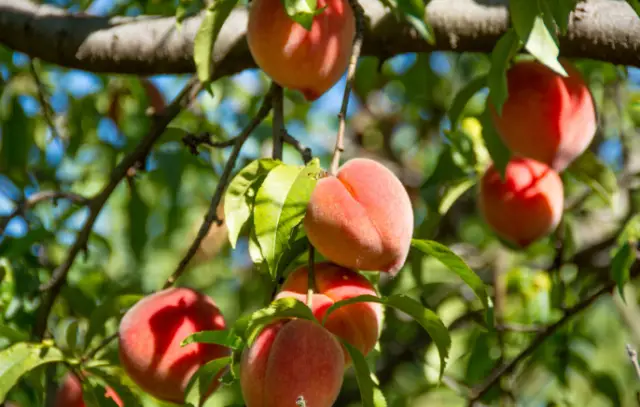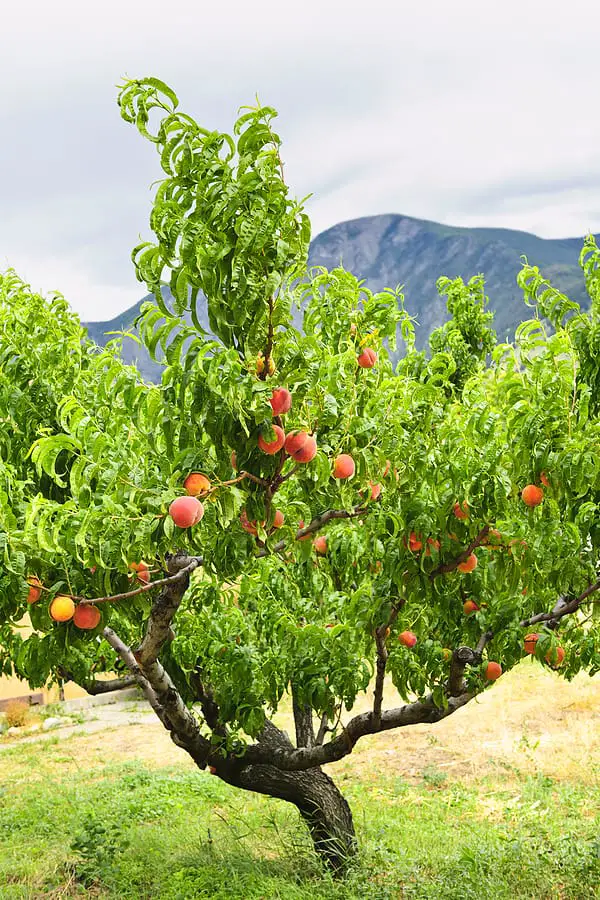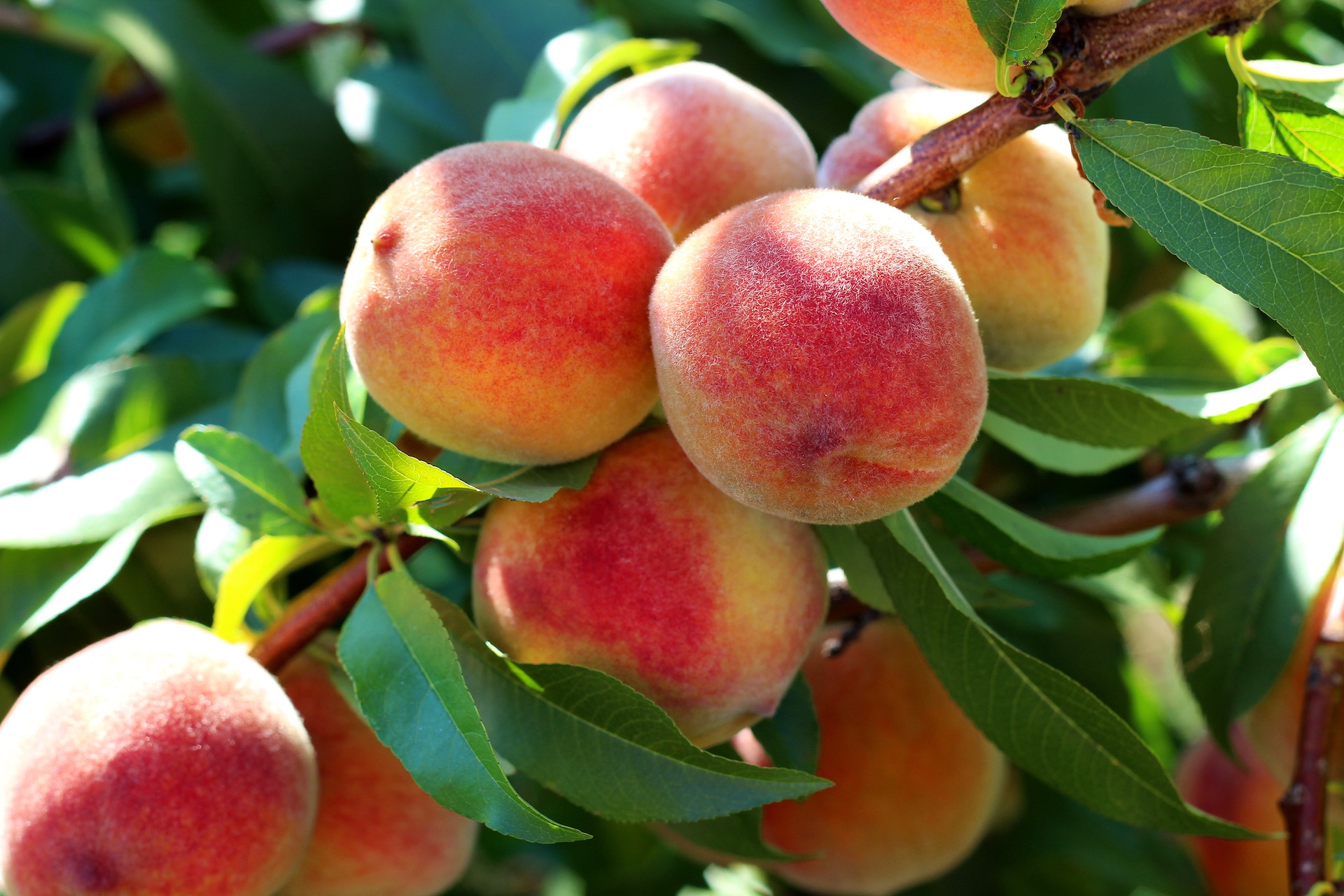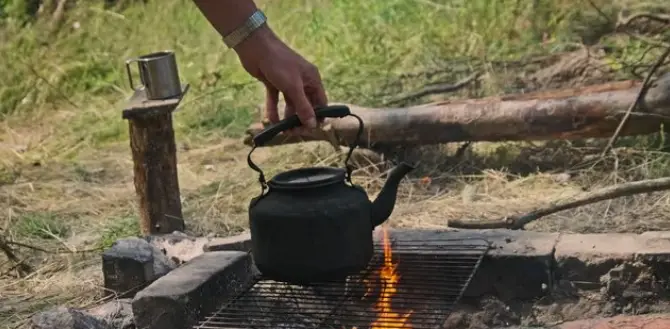How to Grow a Peach Tree From Seed in 5 Easy Steps
Growing a peach tree from seed can be a rewarding and fascinating experience. Imagine nurturing a tiny seed into a flourishing tree that eventually bears delicious, homegrown peaches. Here are five easy steps to get you started on your peach-growing journey:
1. Dry Out Your Peach Pit
- After enjoying a juicy peach, save the pit (also known as the seed) and remove any flesh from it.
- Rinse the pit in the sink and place it in a dry area with good airflow, such as a window sill.
- Allow the pit to dry for three to four days. It must be completely dry to crack it open easily.
2. Remove the Seed from the Pit
- Once the pit is fully dry, use a nutcracker or a pair of pliers to gently crack open the hard outer shell.
- Be careful not to apply too much force to avoid damaging the tender seed inside.
- Remove the outer coating to reveal the white peach seed, which looks similar to an almond.
3. Soak the Seed
- Fill a plastic storage bag with an inch of room-temperature water.
- Add the peach seed and close the bag tightly.
- Let the seed soak for 2 to 3 hours.
- After soaking, add about a cup of fresh potting mix to the bag until the soil consistency is damp but not soggy.
4. Chill Out
- Place the bag (with soil, water, and the peach seed) in the refrigerator at a temperature between 34 to 42°F (1 to 6°C).
- Keep it away from other fruits and vegetables.
- Leave the bag in the refrigerator for 5 to 6 weeks, checking daily for signs of germination or sprouting.
- Once the seed has started to grow, it’s time to move on to the next step.
5. Pot Your Peach Seedling
- Plant your seedling in a mix of half potting soil and half compost.
- Choose a ceramic or plastic container.
- Plant the seed about 6 inches below the top of the container.
- This allows you to closely monitor water and nutrients compared to planting directly in the ground.
Note: Growing a peach tree from seed requires patience because it will take several years to bear fruit. Additionally, keep in mind that seed-grown peaches may differ in vigor, fruit quality, and flavor from commercially grafted trees. But the experience of watching your peach tree grow from a tiny seed is truly rewarding!

What Are The Best Peach Varieties For Beginners?
If you’re a beginner looking to grow your own peach tree, consider starting with varieties that are relatively easy to cultivate. Here are some top peach varieties that beginners can enjoy:
- Freestone Peaches: These are the best all-around choice for beginners. They have yellow flesh, are incredibly sweet, and have a juicy texture. Freestone peaches are perfect for eating fresh and can also be used in cooking and baking.
- White Peaches: White peaches are slightly less tart than their yellow counterparts. They have a delicate flavor and a smooth texture. Beginners will appreciate their sweetness and low acidity.
- Donut Peaches (Saturn Peaches): Donut peaches are small, round, and flat like a donut (hence the name). They are less acidic and have a mild, sweet taste. Their unique shape makes them fun to grow and eat.
- Nectarines: Although not technically peaches, nectarines are closely related and share similar growing requirements. Nectarines have smooth, non-fuzzy skin and come in both yellow and white varieties. They are sweet, juicy, and great for beginners.
How to Choose the Right Peach Tree For My Climate?
Choosing the right peach tree for your climate is essential for successful growth and a bountiful harvest. Let’s explore how to make the best choice based on your local conditions:
- Understand Chill Hours:
- Chill hours (also known as “chill units” or CUs) are the number of hours at or below 45°F (or between 32°F and 45°F).
- Peach trees require a specific amount of cold exposure during winter to break dormancy and produce fruit.
- Too few or too many chill hours can impact fruit production.
- Selecting Peach Varieties:
- Low-Chill Varieties: If you live in an area with warm winters, choose peach cultivars that need fewer chill hours. These varieties are well-suited to milder climates.
- Examples of low-chill peach cultivars:
- FlordaPrince, TropicBeauty, and Desert Gold (require less than 250 chill hours).
- Gulf Prince and Champagne (need 250-400 chill hours).
- Bonanza and Suwanee (require 400-650 chill hours).
- Examples of low-chill peach cultivars:
- Harvest Timing: Consider when you want to harvest. Some varieties mature earlier in the season, while others ripen later.
- Low-Chill Varieties: If you live in an area with warm winters, choose peach cultivars that need fewer chill hours. These varieties are well-suited to milder climates.
- Climate Zones:
- Peach trees can be grown in USDA Zones 4 to 10, but they thrive especially well in Zones 6 to 8.
- If you’re in Zones 6 to 8, focus on choosing a variety based on flavor and harvest time1.
- Mitigating Heat Stress:
- Hot climates can stress peach trees. To address this:
- Watering: Provide regular deep watering to prevent drought stress.
- Shading: Shield young trees from intense sun using shade cloth or temporary structures.
- Whitewashing: Apply a diluted white latex paint to the trunk to prevent sunburn.
- Mulching: Mulch around the base of the tree to retain moisture and regulate soil temperature.
- Hot climates can stress peach trees. To address this:
What soil Conditions do Peach Trees Prefer?

Peach trees thrive when planted in soil that meets their specific requirements. Here’s what you need to know about the ideal soil conditions for growing healthy peach trees:
- Soil Type and Texture:
- Preferred Soil: Peach trees prefer middle, well-drained sandy loam soils that are around 4 feet (1.2 meters) deep.
- Avoid Heavy Soils: Heavy soils (such as clay) are unsuitable because they can lead to physiological issues like foliage chlorosis and reduced fruit production.
- Optimal Soil pH: Aim for a soil pH level between 6.0 and 7.5 for optimal peach tree growth.
- Salinity Sensitivity:
- Peach trees are sensitive to increased salinity levels in both soil and water. Avoid excessively salty conditions.
- Frost Considerations:
- Avoid Frost-Prone Areas: When selecting a planting site, avoid frost-prone areas. Peach trees are sensitive to low temperatures, especially during flowering (late spring frosts).
- Sunlight Exposure: For maximum yield and quality fruits, ensure that the peach orchard receives at least 8 hours of direct sunlight.
- Soil Preparation:
- Tillage: In conventional tillage systems, plow the field to a depth of 20-27 inches (50-70 cm) to eliminate perennial weeds and loosen the soil for proper root development.
- Pre-Planting Fertilization: Apply pre-planting fertilizers such as manure (20-30 tons per hectare or 8-12 tons per acre) or synthetic commercial fertilizers to enhance soil fertility.
- Soil Analysis: Before planting, perform a soil analysis to assess soil characteristics, nutrient availability, and the presence of pests or pathogens.
- Raised Beds: In poorly draining soils, consider planting peach trees in raised beds (1-2 feet high and at least 3 feet wide).
How to Improve Soil Drainage For my Peach Tree?
Improving soil drainage is crucial for the health and vigor of your peach tree. Properly drained soil ensures that excess water doesn’t accumulate around the roots, preventing issues like root rot. Here are some steps to enhance soil drainage:
- Choose the Right Location:
- Elevate the Planting Area: If your soil tends to get waterlogged, consider creating a raised mound or planting the tree on a slight slope. This elevates the root system above the groundwater level.
- Avoid Low Spots: Avoid planting in low-lying areas where water tends to collect.
- Amend the Soil:
- Add Organic Matter: Mix in organic matter such as compost, leaf mold, or peat moss. These materials improve soil structure, promote drainage, and provide essential nutrients.
- Coarse Sand: If your soil is heavy clay, mix in coarse sand to improve drainage. Aim for a well-draining sandy loam texture.
- Create a Raised Bed:
- Build a Raised Bed: Construct a raised bed using well-draining soil mix. This allows you to control soil quality and drainage.
- Plant on a Mound: If you’re planting directly in the ground, create a mound of soil where the tree will be placed.
- Install Drainage Pipes:
- French Drains: Install French drains around the planting area. These underground pipes help channel excess water away from the tree’s root zone.
- Perforated Drainage Pipes: Place perforated drainage pipes in the soil to facilitate water movement.
- Avoid Overwatering:
- Water Deeply but Infrequently: Peach trees prefer evenly moist soil. Water deeply when needed, but allow the soil to dry out between waterings.
- Monitor Soil Moisture: Use a moisture meter or stick your finger into the soil to check moisture levels.
- Mulch Wisely:
- Apply Mulch: Spread a 2-3 inch layer of organic mulch (such as wood chips or straw) around the base of the tree. Mulch helps retain moisture, suppresses weeds, and maintains soil temperature.
- Keep Mulch Away from the Trunk: Ensure the mulch doesn’t touch the tree trunk to prevent rot.
What Signs Indicate Poor Drainage in The Soil?
Poor drainage in soil can significantly impact plant health and growth. Here are some signs to watch out for:
- Surface Ponding: If water pools on the soil surface after rain or irrigation, it’s a clear indication of poor drainage. Standing water can suffocate plant roots and lead to root rot.
- Smelly Soil: Foul odors, especially a sulfurous smell, may indicate poor drainage. Anaerobic conditions (lack of oxygen) in waterlogged soil can produce unpleasant smells.
- Gleying: Look for soil with a gray appearance due to the reductive dissolution of iron-containing minerals. This process, known as gleying, occurs in poorly drained soils.
- Mottled Appearance: Soils that shrink and swell during wetting and drying may appear mottled. These fluctuations in moisture levels are common in poorly drained areas.
- Aquatic Plants: The presence of aquatic plants (like cattails or water-loving grasses) suggests excessive water and poor drainage.
- Seasonal Saturation: If the soil becomes saturated during rainy seasons and remains wet for extended periods, it’s a sign of inadequate drainage.
Common Mistakes to Avoid When Planting Fruit Trees?
When planting fruit trees, avoiding common mistakes is crucial for their successful establishment and long-term health. Here are some key points to keep in mind:
- Using the Right Tools:
- Square Hole: Instead of digging a circular hole, use a square garden spade. A square hole allows the roots to penetrate into the soil walls, promoting better growth.
- Score the Edges: Score the edges of the hole to encourage root penetration, especially in dense soil.
- Transplanting Correctly:
- Root Ball Massage: Gently massage the root ball to loosen soil from the container before planting.
- Graft Union Position: Ensure the graft union (where the scion meets the rootstock) is a few inches above the soil level.
- Avoid Soil Amendments: Refrain from adding compost or fertilizers during planting. Let the roots search for nutrients naturally.
- Avoid Staking:
- Don’t Stake the Tree: Allow the tree to support itself. Staking can prevent the tree from developing strong roots and trunk.
- Mulch Application:
- Mulch the Base: Apply mulch around the base of the tree to retain moisture and suppress weeds.
- Choose Wood Chips: Consider using wood chips as mulch.
- Pruning:
- Prune the Tree: Trim about a third of the branches to encourage strong, outward-growing branches.
- Focus on Root Production: Prioritize root growth during the first year.
- Watering:
- Daily Watering: Water the tree daily for the first two weeks after planting.
- Gradual Reduction: Adjust watering frequency gradually over time as the roots establish.
How to Protect Young Fruit Trees From Pests and Diseases?
Protecting young fruit trees from pests and diseases is crucial for their healthy growth and productivity. Here are some essential steps to safeguard your fruit trees:
- Choose Disease-Resistant Varieties:
- When selecting fruit tree varieties, opt for those that have natural resistance to common diseases prevalent in your area.
- Disease-resistant cultivars are less susceptible to infections and require fewer chemical interventions.
- Proper Planting and Site Selection:
- Plant in Well-Drained Soil: Ensure the soil drains well to prevent waterlogged roots, which can lead to root rot and other diseases.
- Sunlight Exposure: Plant fruit trees in areas with adequate sunlight for optimal growth and disease resistance.
- Mulch and Weed Management:
- Mulch: Apply organic mulch around the base of the tree to retain moisture, suppress weeds, and regulate soil temperature.
- Weed Control: Remove weeds regularly, as they compete for nutrients and can harbor insect pests.
- Pruning and Thinning:
- Prune Annually: Regular pruning helps maintain an open canopy, improves air circulation, and reduces disease pressure.
- Thinning: Thin excess fruit to prevent overcrowding and improve fruit quality.
- Monitor and Inspect:
- Regularly Check Trees: Inspect your fruit trees for signs of pests, diseases, or stress.
- Early Detection: Catch problems early to prevent them from spreading.
- Integrated Pest Management (IPM):
- Beneficial Insects: Encourage beneficial insects like ladybugs and lacewings to control pests naturally.
- Trap Crops: Plant trap crops nearby to divert pests away from fruit trees.
- Biological Controls: Use biological agents like nematodes or parasitic wasps to manage pests.
- Chemical Controls (if Necessary):
- Selective Pesticides: If pests or diseases become severe, consider using selective pesticides.
- Follow Label Instructions: Always follow label instructions and safety precautions when applying chemicals.
Natural Remedies For Common Pests on Apple Trees?
When it comes to protecting apple trees from pests, natural remedies can be effective without resorting to harsh chemicals. Here are some eco-friendly approaches to tackle common apple tree pests:
- San Jose Scale:
- These tiny armored bugs feed on bark sap and leave sticky wax trails.
- Spotting Infestation: Look for tiny white bodies on branches, leaves, and deformed apples.
- Remedy: Apply a 2% horticultural oil or insecticide to branches, leaves, and trunks to control San Jose scale.
- Thrips:
- Thrips puncture apple trees and suck their contents, causing fruit and stem deformities.
- Spotting Infestation: White scarring on affected fruit and leaves.
- Remedy: Set up sticky traps or use natural sprays like horticultural oil or soap.
- Borers:
- Borers attack stressed apple trees, especially flatheaded borers.
- Spotting Infestation: Inspect for tiny holes, dead limbs, and slow growth.
- Prevention: Keep trees hydrated, fertilized, and pruned. Remove severely infested trees.
- Plum Curculio:
- Despite the name, plum curculio targets more than just plums.
- Remedy: Use natural predators and avoid chemical insecticides that harm beneficial insects.
- Spider Mites:
- Spray apple trees with water to dislodge mild mite infestations.
- For severe infestations, use neem oil, insecticidal soaps, or Bt (Bacillus thuringiensis).
- General Prevention Tips:
- Prune Regularly: Remove crossing branches and overcrowded areas.
- Mulch: Apply mulch around the base of the tree.
- Monitor and Inspect: Regularly check for signs of pests and diseases
Frequently Asked Questions (FAQs) About Growing Peach Trees From Seeds:
- Can I grow a peach tree from the pit of a store-bought peach?
- Yes, you can! After enjoying a juicy peach, save the pit and follow the steps to grow your own peach tree.
- How do I prepare the peach pit for planting?
- Rinse the pit, let it dry completely, and crack it open to reveal the white seed inside.
- What’s the next step after cracking the pit?
- Soak the seed in water for a few hours, then plant it in a mix of potting soil and compost.
- How long does it take for the seed to sprout?
- Place the seed in the refrigerator for 5 to 6 weeks. Check daily for signs of germination.
- Can I plant the seed directly in the ground?
- It’s better to start in a container to monitor water and nutrients. Transplant to the ground once it grows a few leaves.
- Will my seed-grown peach tree produce the same fruit as the parent peach?
- Not necessarily. Commercially grown peaches are usually grafted, so seed-grown trees may differ in vigor, fruit quality, and flavor.
- How long until my seed-grown peach tree bears fruit?
- Be patient—it may take several years for fruit production.
- What care does a young peach tree need?
- Provide full sun, well-drained soil, and regular watering.
- Can I grow a dwarf peach tree from seed?
- Yes, choose dwarf peach varieties and follow the same steps.
- Is growing peaches from seed worth it?
- While it’s a longer process, the experience of watching your tree grow from a tiny seed can be rewarding!
Sources:








